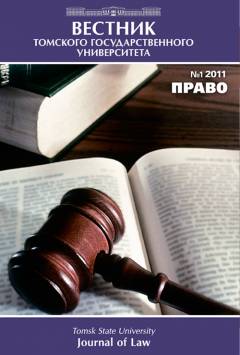On the criminalistic model of crimes committed by advenal persons
The current demographic state of Russian society is characterized by significant changes in the ethnic composition of the population. The ongoing immigration processes led to the emergence of a new national element - representatives of ethnic groups of the Middle and Far Abroad, who have moved for a long or permanent residence in the Russian Federation and some of them having already been granted Russian citizenship. Migrants are often involved in criminal proceedings, committing crimes or becoming victims of criminal assaults. The need to take into account ethnic differences in the development of methodical recommendations for the investigation of crimes committed by these subjects leads to the development of new criminalistic content-an advenal person (advenalia). An advenal person is a person who, because of his ethnicity, differs from the representatives of the Russian macro-ethnic community by his national language, the way of thinking and behaviour. At the same time, advenal persons can be foreigners or naturalized citizens of the Russian Federation. Since crimes committed by advenals make up a criminalistic but not a criminal category, it is possible to distinguish the most frequent (typical) types of crimes committed within the framework of this structure. They include crimes against public health and public morality; economic crimes, crimes related to the illegal trafficking of natural resources of the Russian Federation and corruption. It is convenient to classify criminalistic models of crimes committed by advenals because of such most striking characteristics as the subjective nature of a group or individual activity; the length and systematic nature of the activities connected with the commission of crimes by advenal persons; motive for committing advenal crimes and criminalistic characterization of the advenal criminal identity. I.Forensic model of group advenal criminal activity. The group nature of criminal activity involves the commission of a criminal act by two or more persons in various forms of complicity. The most common form of group criminal activity of advenal persons is an organized crime group, but there can also be a group of persons, a group of persons under preliminary collusion, and a criminal community (criminal organization). II. Forensic model of individual criminal activity of an advenal person. Sometimes, there is a pronounced ethnicity in the process of crime committed by an advenal person. For example, the typically occurring infringements on the person committed by advenal persons include murder (Article 105 of the Criminal Code of the Russian Federation), intentional infliction of serious harm to health (Article 111 of the Criminal Code of the Russian Federation), intentional infliction of moderate harm to health (Article 112 of the Criminal Code of the Russian Federation), intentional infliction of light harm to health (Article 115 of the Criminal Code of the Russian Federation) and beatings (Article 116 of the Criminal Code of the Russian Federation). In the course of the commission of these crimes, the fact of belonging to the advenal ethnic group, and, as a result, ethnic attitudes and stereotypes, influences the formation of the motive and choice of the victim. More often, the cultural and psychological component of ethnicity is of criminalistic importance. Thus, advenal values, traditions and customs do not always coincide with the values and behaviour of those who have the potential to become a victim of crime.
Keywords
адвенальное лицо, криминалистическая модель преступления, расследование преступлений, совершенных иностранцами, advenal person, a criminalistic model of crime, investigation of crimes committed by foreignersAuthors
| Name | Organization | |
| Foigel Elena I. | Institute of state and law of Baikal State University | foiguelelena@gmail.com |
References

On the criminalistic model of crimes committed by advenal persons | Tomsk State University Journal of Law. 2019. № 33. DOI: 10.17223/22253513/33/15